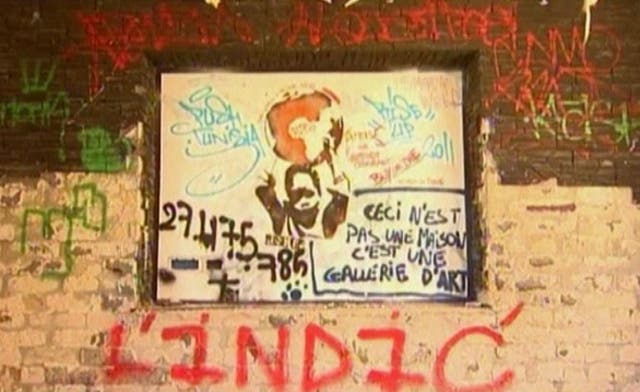Tunisian artists use graffiti to fight religious extremism
Practicing artistic freedom on a large scale Tunisian artists fight religious extremism as they display their graffiti on a religious building in the capital, the heart of Tunisia’s revolution.
Tension between artists and religious sectors came to the forefront of Tunisian consciousness when thousands of Salafi Islamists, angered by an art exhibition they said insults Muslims, rampaged through parts of Tunis in June.
Riots broke out in the capital with protesters hurling rocks and petrol bombs at police stations, a court house and the offices of secular parties in some of the worst clashes since last year's revolt ousted President Zine al-Abidine Ben Ali and launched uprisings across the Arab world.
Artists are now claiming their creative freedom back, painting message of “hope after the revolution” says calligraffiti artist El Seed, who combines calligraphy and graffiti to display poetic messages.
Describing his work on a wall in the old city of Tunis, El Seed said:
This calligraffiti is a quote from the poet Abou El Kassem Echebbi which says that “the sun rises behind the centuries”. It's a way of bringing a message of hope after the revolution. It's a positive message and a bright vision of the future," El Seed told Reuters, referring to a line from a Tunisian poem that says the sun will always rise after chaos and despite any difficulties faced by mankind.
One of his latest projects took the French born Tunisian artist to the country’s tallest minaret at the Jara Mosque. Located in his hometown, El Seed in August completed painting the largest mural in the country covering 47 meters of the surface of the 57-metre long minaret.
Welcomed by the mosque, El Seed turned the religious landmark to an artistic one also in a bid to promote tolerance.
Speaking about his projects El Seed said he is determined to prove extremists wrong and tamp down religious tensions in the birthplace of the Arab Spring, which have piled pressure on the moderate Islamist government.
“Nowadays, I have to make more calligraffitis in Tunisia because I need to represent them to two types of people. I have the impression that we have two types of extremists in Tunisia. There are religious and secular extremists. There is just one thing on which they agree - that there's no creativity and no art in Islam. My work is a way to prove them wrong. I think and I hope that the Minaret project in Gabes will prove the extremists wrong.”
Similar messages of peace and tolerance shine amid the ruins of what was once the homes of former President Zine Abidine Ben Ali's families, located in Gammarth and La Soukra.
Tunisian graffiti artist Sk-one who in 2011 and 2012 joined dozens of other artists to transform the remains of conflict ravaged homes into positive messages for the nation says his art is his weapon.
“We come here to fight against dictatorship but we don’t use arms and ammunition. Everyone has their own way of fighting tyranny. Our art is our weapon. We don't use bullets. Anything could be more efficient than weapons,” said Sk-one.
“There is a power in the graffiti which gathers and unites the people, because art is the most important thing. The religion and the origin of the artists and the people who work on a project are insignificant. The common vision and the artistic performance is the most important factor at the end. This is the most important thing,” added Sk-one, who now enjoys open access to the once government protected sites.
Violence and conflict over artwork had raised tough questions about the limits of freedom in the new Tunisia and fueled fears among Tunisians of a slide into instability. It is also put the ruling moderate Islamist party Ennahda in a tough position as it struggles to satisfy conflicting demands.
While Islamists did not play a major role in the revolution, the struggle over the role of Islam in government and society has since emerged as the most divisive issue in Tunisian politics.
